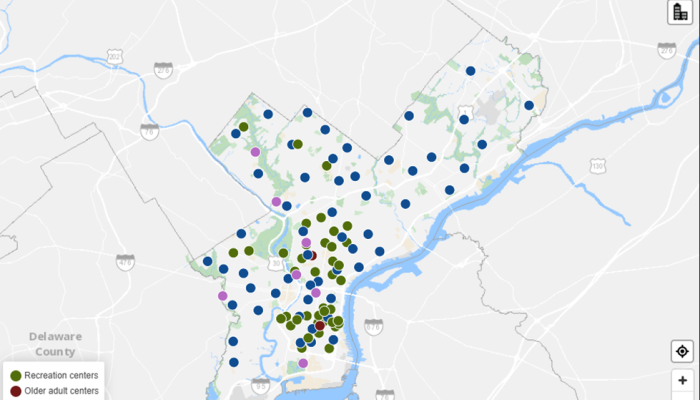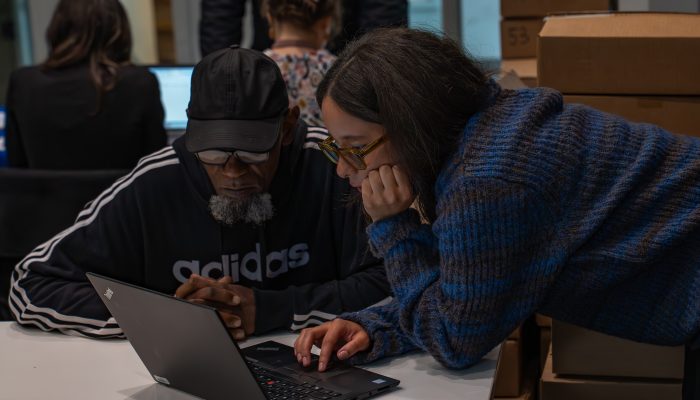Blog post by Joanna Hecht, Pitch and Pilot Fellow, Office of Innovation and Technology
In August, Philadelphia’s roads were in the headlines. A study commissioned by the U.S. Chamber of Commerce found that the city’s roads were the best of the 20 metro regions they evaluated using artificial intelligence. Philadelphians were unimpressed.
It’s easy to point to a story like that as an example of technology missing the mark. However, there are ways to use technology in ways that benefit residents. The City of Philadelphia’s SmartCityPHL program is leading two pilot projects that use artificial intelligence to make City government more responsive to community concerns about Philadelphia’s roads.
More data from the roads
The U.S. Chamber’s rankings were based on 71 of Philadelphia’s 2,500 miles of roadways, located mainly in Center City. That small sample was intentionally focused on business districts.
SmartCityPHL and the Streets Department have been working with a company called GoodRoads to get a more complete picture of city streets. In the fall of 2020, City street inspectors attached GoodRoads’ cameras to their vehicles and captured images of about 1,200 miles of roadway, ranging from big arterials to one-lane residential roads. GoodRoads’ software uses artificial intelligence to identify cracks, potholes, manhole covers, lane markings, and signs. Humans review the software’s findings to help “train” the image recognition to get better over time.
The Streets Department is using that data to prioritize repairs and resurfacing. They’re also working to factor in other geographic data to ensure underserved communities are receiving the investment they deserve—meeting the Mayor’s goal of including equity into the city budgeting process.
More data from the people
While news coverage acknowledged the limitations of the Chamber’s study, the headlines were enough to spur an uptick in pothole reporting. How do we know that? A second SmartCityPHL pilot uses artificial intelligence to analyze public sentiment through 311 reports and social media posts.
The pilot project uses technology developed by Zencity to track trends across Philadelphia and in individual neighborhoods. Zencity’s data platform allows City personnel to see how residents respond to programs or news reports like the Chamber’s study. We saw a spike in negative posts about paving and potholes in the days following the study’s release. Philadelphians also took action: we saw a sharp increase in potholes reported to 311, especially in South Philadelphia.
The Zencity platform helps prioritize feedback that Philadelphians share in the course of their daily lives. Typically, the City only hears from those who go out of their way to contact Councilmembers or City departments. By incorporating publicly available data from social media, we can incorporate feedback from more people without any extra effort on their part. Hearing from a larger portion of the population can help us be responsive to the community as a whole.
Putting it all together
The City can improve services and shape priorities through well designed projects that use artificial intelligence to add capacity and create efficiencies. Getting a comprehensive look at the city’s roadways will help the Streets Department plan investments in road resurfacing. If the project is scaled up, they could routinely inspect all 2,500 miles of Philadelphia’s roads using City fleet vehicles.
The five City departments who are using the Zencity platform are gaining valuable insights into what Philadelphians care about. As we see how sentiment fluctuates across the City, we can start to answer bigger questions, like:
- Why are certain problems reported to 311 more in different neighborhoods?
- Do 311 reports correlate with social media discussions?
- Are there parts of Philadelphia where residents are less likely to submit reports?
- How can the City demonstrate its responsiveness to individual feedback while ensuring equitable distribution of resources?
We’re using technology to better interpret data from Philadelphia and its residents—and this all starts with listening to what our community has to say.




